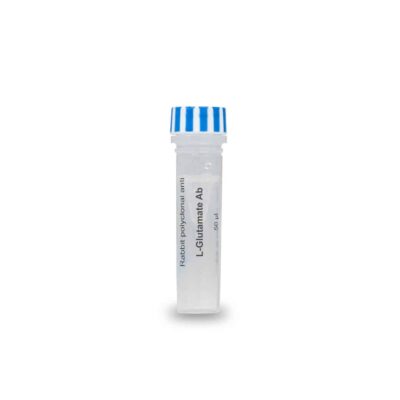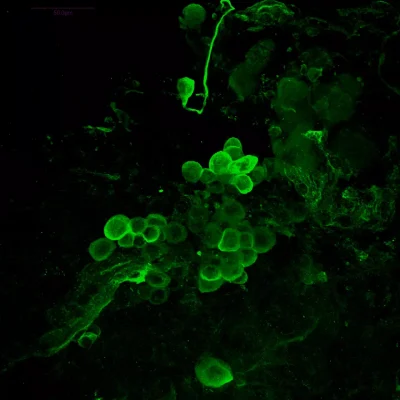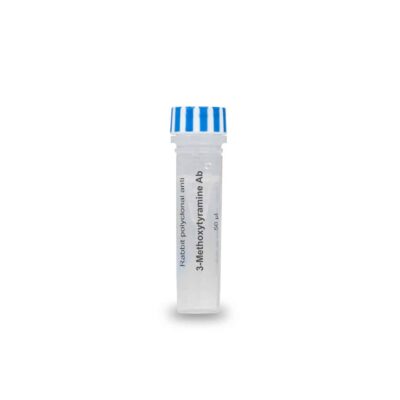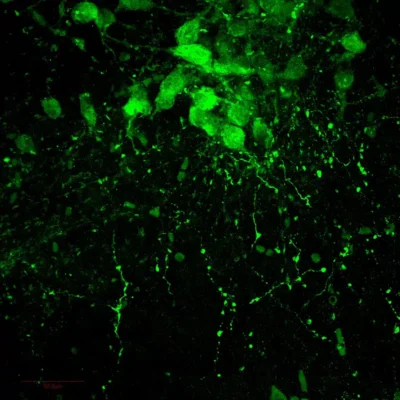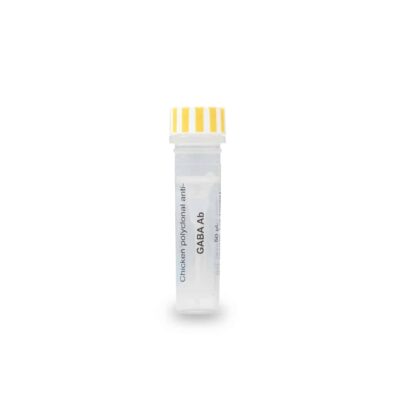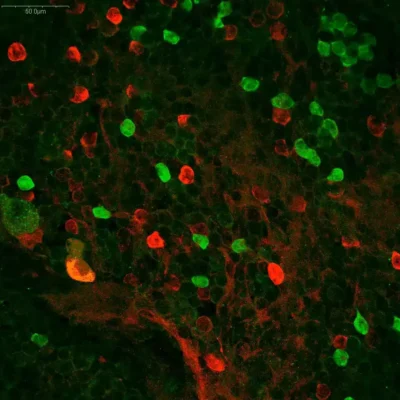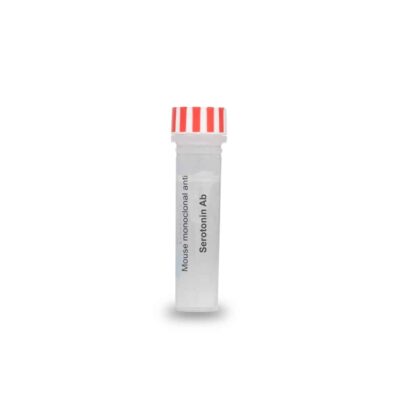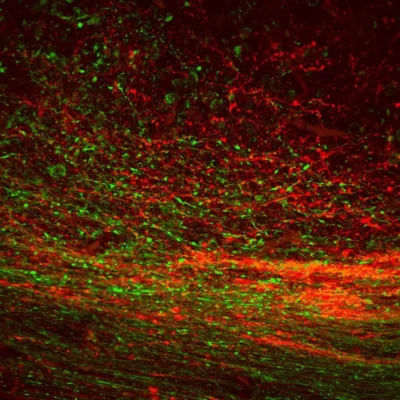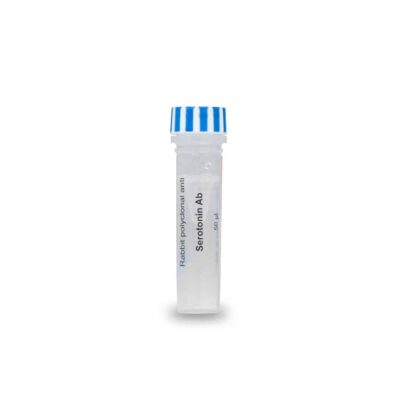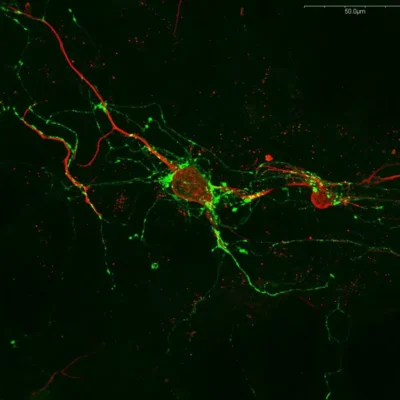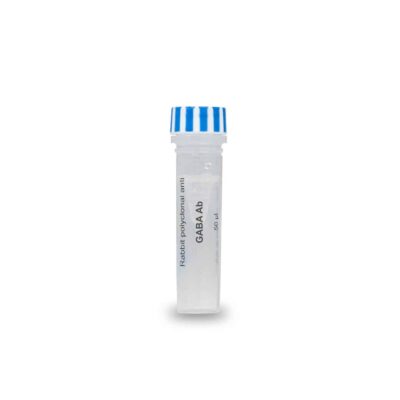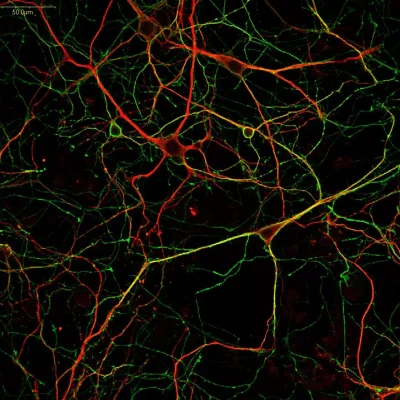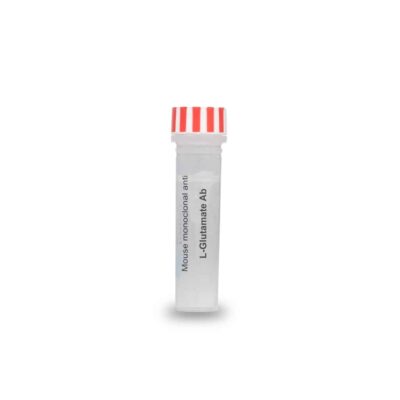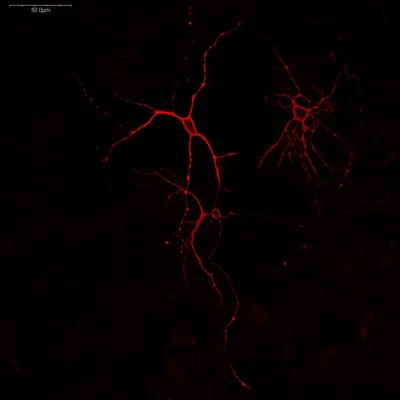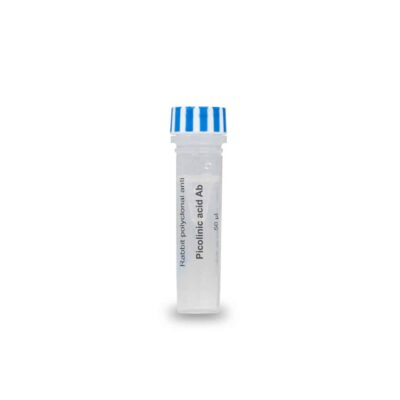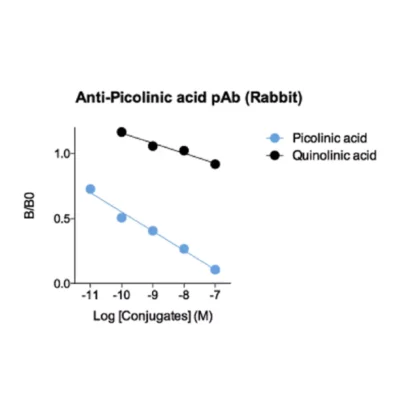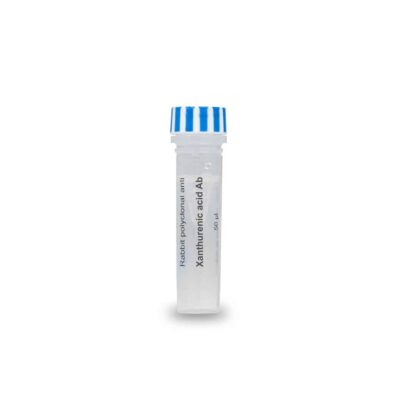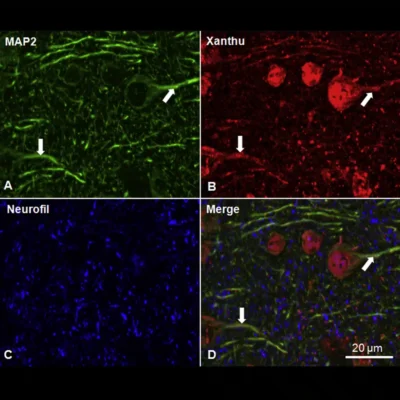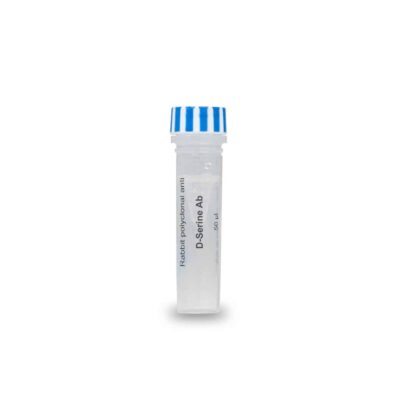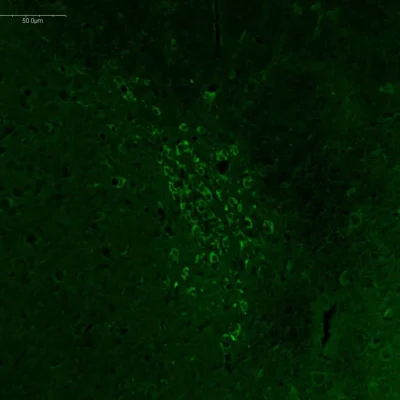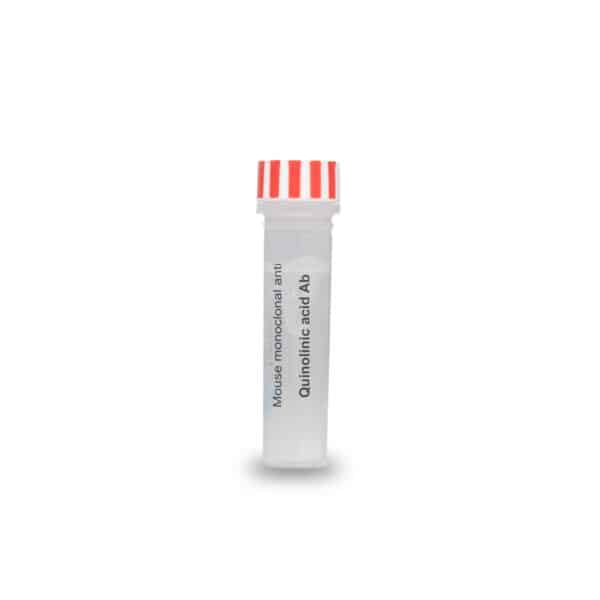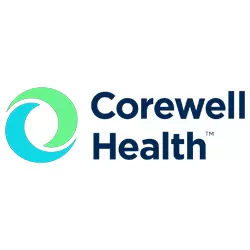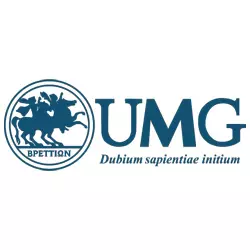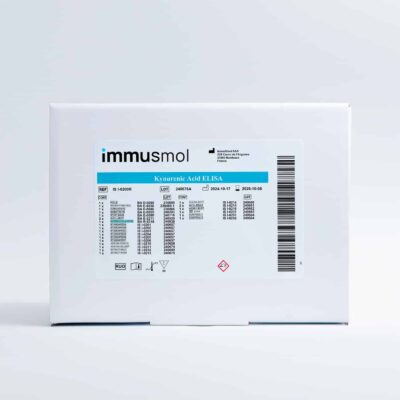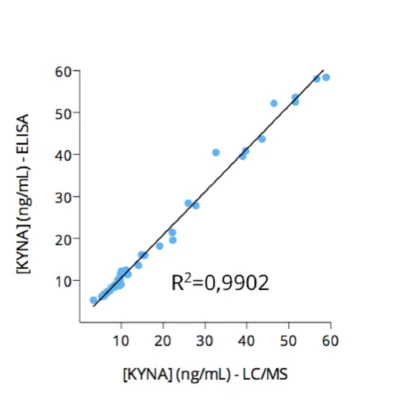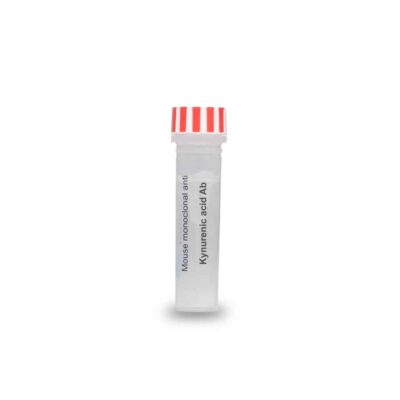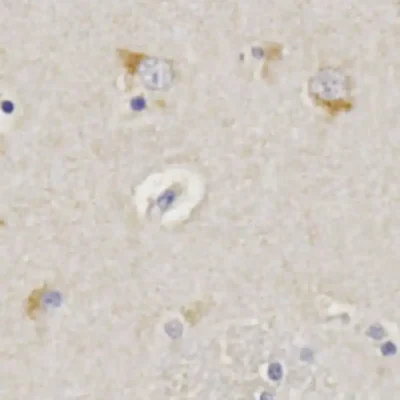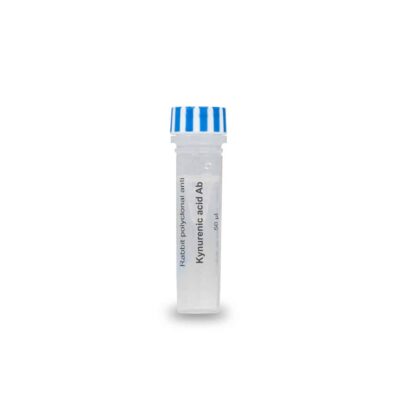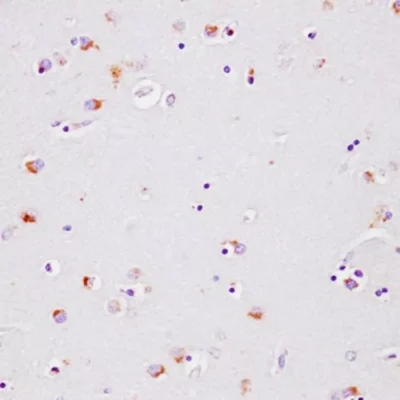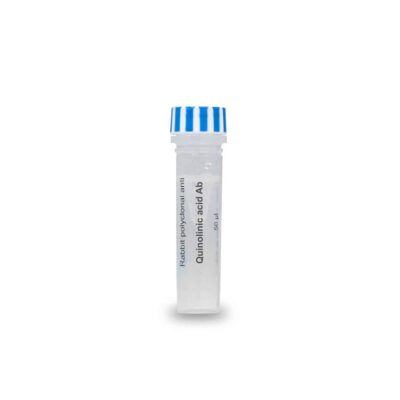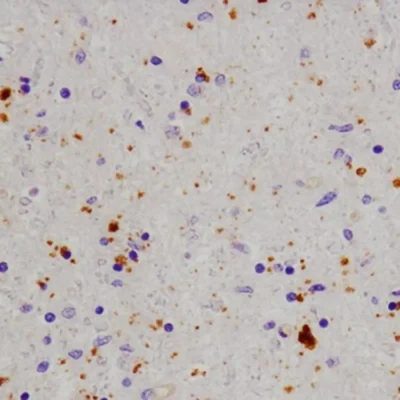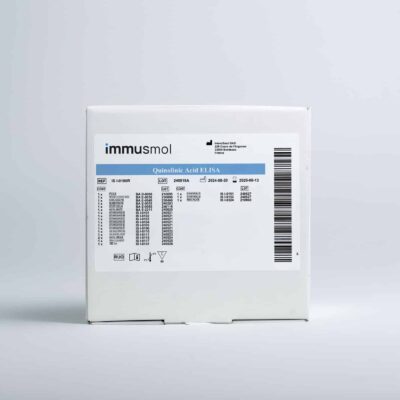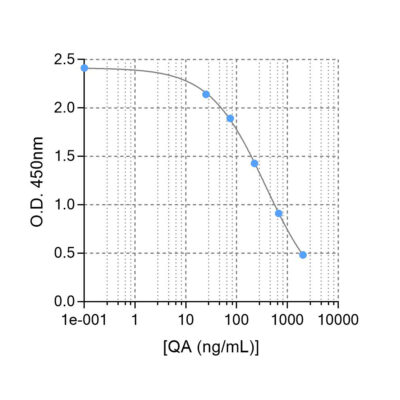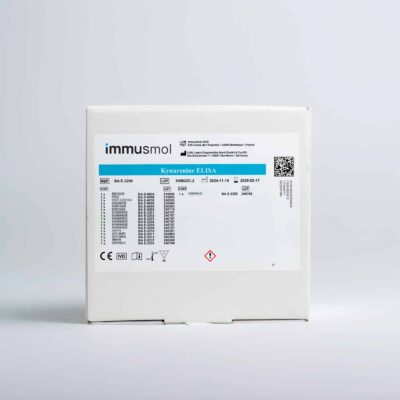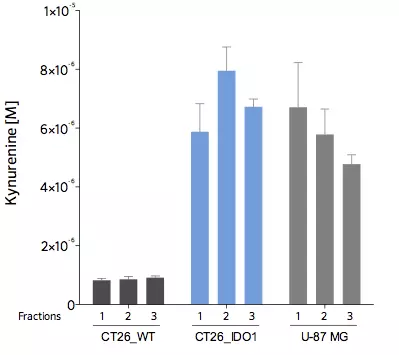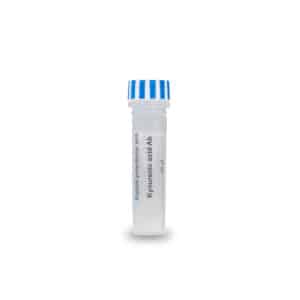- Home
- Products
- Antibodies
- Quinolinic acid Antibody - Mouse Monoclonal
Related products
L-Glutamate Antibody – Rabbit Polyclonal
499$
GABA Antibody Chicken Polyclonal
499$
Serotonin Antibody – Mouse Monoclonal
499$
GABA Antibody – Rabbit Polyclonal
499$
Glutamate Antibody (L) – Mouse Monoclonal
499$
Xanthurenic acid Antibody – Rabbit Polyclonal
499$
D-Serine Antibody – Rabbit Polyclonal
499$
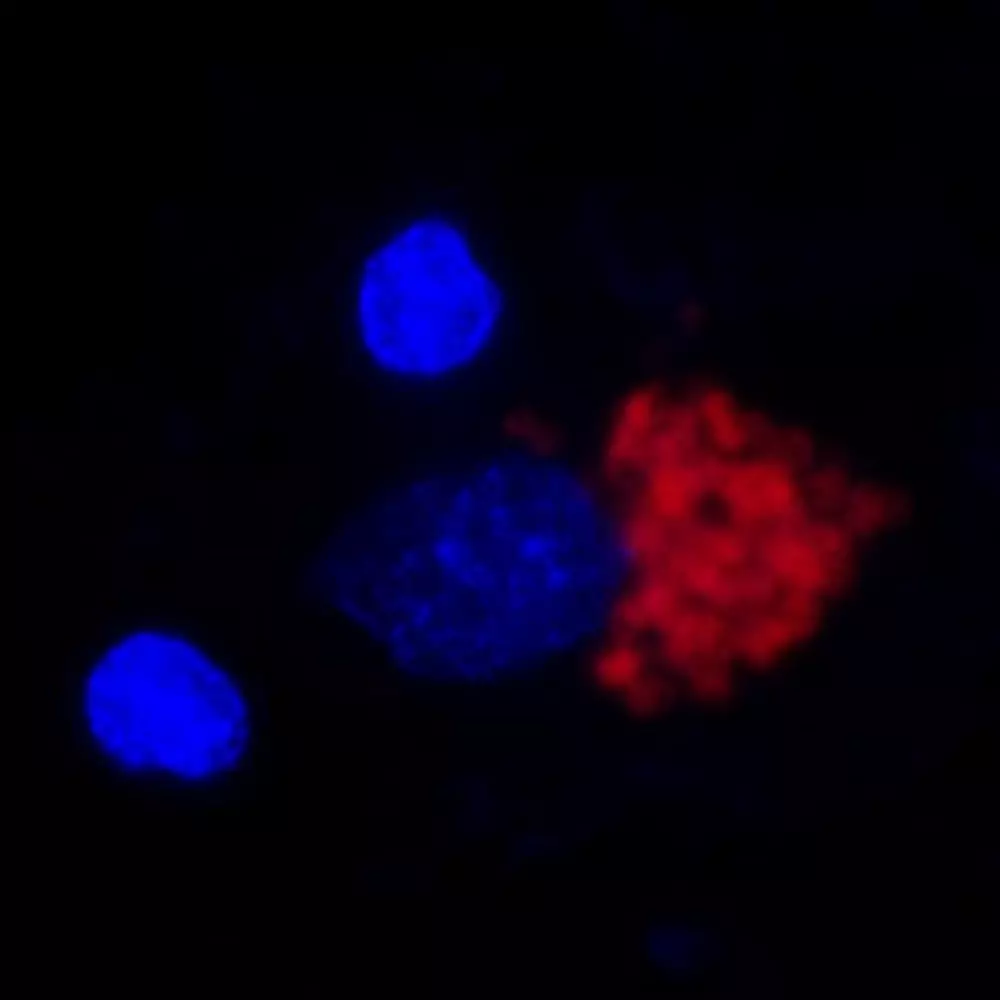 Quinolinic acid detection in human midbrain by immunohistofluorescence (IHF)Immunofluorescence staining highlights nuclear exclusion of Quinolinic acid in human midbrain. Paraffin-embedded brain tissue section was subjected to pH=9 antigen retrieval followed by overnight incubation with primary anti-Quinolinic acid antibody (dilution 1/250). After incubation with Alexa-555 conjugated secondary Ab, epifluorescence microscopy (100X) was used to visualize the staining.
Quinolinic acid detection in human midbrain by immunohistofluorescence (IHF)Immunofluorescence staining highlights nuclear exclusion of Quinolinic acid in human midbrain. Paraffin-embedded brain tissue section was subjected to pH=9 antigen retrieval followed by overnight incubation with primary anti-Quinolinic acid antibody (dilution 1/250). After incubation with Alexa-555 conjugated secondary Ab, epifluorescence microscopy (100X) was used to visualize the staining.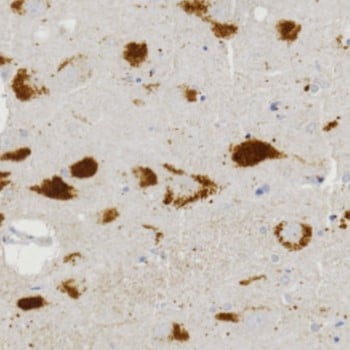 Quinolinic acid detection in human midbrain by immunohistochemistry (IHC)Immunohistochemical analysis reveals cytoplasmic presence of Quinolinic acid in human midbrain tissue. Paraffin-embedded tissue section was subjected to pH=9 antigen retrieval followed by overnight incubation with primary anti-quinolinic acid antibody (dilution 1/500). After incubation with polymer-conjugated secondary Ab, DAB was used to visualize the staining.
Quinolinic acid detection in human midbrain by immunohistochemistry (IHC)Immunohistochemical analysis reveals cytoplasmic presence of Quinolinic acid in human midbrain tissue. Paraffin-embedded tissue section was subjected to pH=9 antigen retrieval followed by overnight incubation with primary anti-quinolinic acid antibody (dilution 1/500). After incubation with polymer-conjugated secondary Ab, DAB was used to visualize the staining.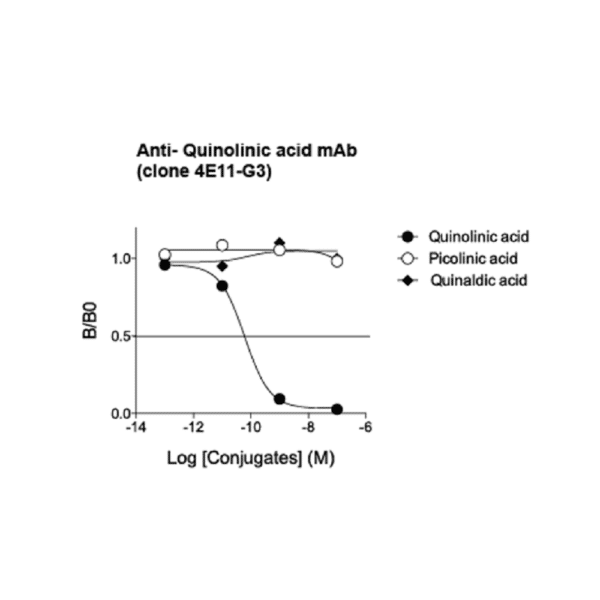 Anti- Quinolinic acid antibody affinity & specificityCompetitive ELISA demonstrates that low amounts of Quinolinic acid conjugate are required to abolish antigen-antibody reaction (high affinity), while rising concentrations of Picolinic and Quinaldic acid conjugates do not affect the reaction (high specificity).
Anti- Quinolinic acid antibody affinity & specificityCompetitive ELISA demonstrates that low amounts of Quinolinic acid conjugate are required to abolish antigen-antibody reaction (high affinity), while rising concentrations of Picolinic and Quinaldic acid conjugates do not affect the reaction (high specificity).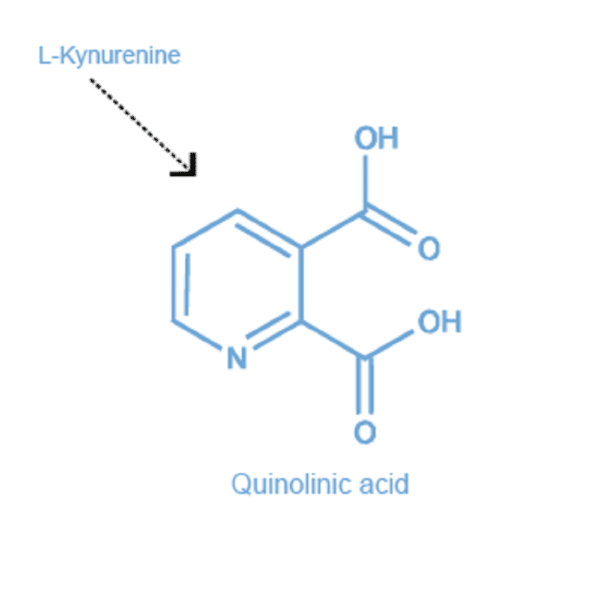 Quinolinic acidTryptophan catabolism along the kynurenine pathway produces neuroactive metabolites, with prototypical neurotoxin Quinolinic acid as a 'chef de file'. Known to be involved in a wide range of neurodegenerative diseases (Amyotrophic lateral sclerosis, Alzheimer's & Parkinson's diseases, ...) as well as psychiatric disorders (depression, schizophrenia, ...), Quinolinic acid induces neuronal damage. Activation of the NMDA-receptor, oxidative stress induction or mitochondrial dysfunction could explain quinolinic acid-induced neurotoxicity.
Quinolinic acidTryptophan catabolism along the kynurenine pathway produces neuroactive metabolites, with prototypical neurotoxin Quinolinic acid as a 'chef de file'. Known to be involved in a wide range of neurodegenerative diseases (Amyotrophic lateral sclerosis, Alzheimer's & Parkinson's diseases, ...) as well as psychiatric disorders (depression, schizophrenia, ...), Quinolinic acid induces neuronal damage. Activation of the NMDA-receptor, oxidative stress induction or mitochondrial dysfunction could explain quinolinic acid-induced neurotoxicity.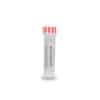

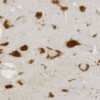
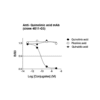
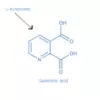
Key features
| Clonality | Monoclonal antibody (clone 4E11-G3) |
| Host | Mouse |
| Reactivity | Reacts with all species |
| Tested samples | Human tissue sections (brain, tumor tissues), rodent tissues |
| Staining procedure | Perform heat antigen retrieval (pH=9) before standard IHF/IF staining |
| Format | 50µl (approx. 40 tissue sections) |
Citations
- 2025 Mahmoud et al., - Edaravone protects against cuprizone-induced demyelination in rats by modulating TNF-α/NF-ĸB/NLRP3 signaling and the kynurenine pathway, Eur J Pharmacol, Species : Rat ; Sample type : Brain ;
- 2025 Kezai et al., - MicroRNA-132 regulates quinolinic acid production in the brain during LPS-induced neuroinflammation, Front. Immunol., Species : Mouse ; Sample type : Brain ;
- 2024 Gliozzi M et al., - The dangerous “West Coast Swing” by hyperglycaemia and chronic stress in the mouse hippocampus: Role of kynurenine catabolism, Pharmacological Research, Species : Mouse ; Sample type : Serum ;
- 2023 Dongen et al., - Atheroma plaque microenvironment stimulates kynurenine production by macrophages to induce endothelial adhesion molecules in the context of atherogenesis, bioRxiv, Species : Human ; Sample type : Plasma ;
- 2023 Kesarwani et al., - Quinolinate promotes macrophage-induced immune tolerance in glioblastoma through the NMDAR/PPARγ signaling axis, Nature Communications , Species : Human ; Sample type : Tumor tissues ;
- 2022 Sugisawa et al., - Nociceptor-derived Reg3γ prevents endotoxic death by targeting kynurenine pathway in microglia, Cell reports, Species : Mouse ; Sample type : Brain ;
Frequently asked questions
Quinolinic acid Antibody – Mouse Monoclonal
This mouse monoclonal antibody to Quinolinic acid was validated for IF & IHC in human brain tissues. Recent publications relied on this antibody to stain for neurotoxin Quinolinic acid in mouse brain tissues and human atheroma plaques.
499$
94 in stock
| Save with quantity discounts | Range | Unit price after discount |
|---|---|---|
| 3 to 5 antibodies (any reference) | 3 - 5 | 11.135857% 443,43$ |
| 6+ antibodies (any reference) | 6 + | 15.59% 421,21$ |
Pay by online or by purchase order
Pay by credit/debit card or generate a quote at checkout (your products will be sent once you provide us with the purchase order)
Fast Worldwide Shipping with Fedex
We ship your order door-to-door in all countries with FedEx International Priority®.
Worry-free Warranty
Made a mistake ordering ? 30-day free return & refund.
Product damaged during shipping ? Free replacement.
Not getting satisfactory results ? If product did not meet quality standards, customer support offers replacement or refund.
Direct Customer Support
For questions, protocol recommendations, and troubleshooting, you have direct access to the scientist that developed the antibody or ELISA kit you’re using.
Direct customer support is available all business days.
A knowledge base containing protocols, Frequently Asked Questions, and troubleshooting tips is also available online.
They published with this product
You may also like…
Kynurenic acid Antibody – Mouse Monoclonal
499$
Quinolinic acid Antibody – Rabbit Polyclonal
499$
IS002
Quinolinic acid Antibody – Mouse Monoclonal
Anti-Quinolinic acid mAb – Purified monoclonal antibody for research use only (liquid 50µL)
Specifications
| Product name | Quinolinic acid mouse monoclonal antibody |
| Synonyms | Quinolinate antibody
Pyridine-2,3-dicarboxylic acid antibody 2,3-pyridinedicarboxylic acid antibody 3,4-Pyridinedicarboxylic acid antibody Pyridine-3,4-dicarboxylic acid antibody |
| Immunogen | Conjugated quinolinic acid |
| Isotype |
IgG1 k chain |
| Clone |
Clone 4E11-G3 |
| Specificity | When tested in competitive ELISA, the anti-Quinolinic acid antibody did not show any significant cross reactivity with Picolinic and Quinaldic acid conjugates |
| Volume | 50 µL |
| Form | Liquid |
| Purity | Purified IgG |
Instructions
| Storage |
Store at +4°C for short term (6 months). Aliquot and store at -20°C for long term. Avoid repeated freeze / thaw cycles |
| Immunohistochemistry (IHC) | Dilute at 1:100-1:1000. Perform heat antigen retrieval (pH=9) before initiating IHC staining protocol on paraffin-embedded and frozen sections |
| Immunofluorescence (IF) |
Dilute at 1:50-1:500 on paraffin-embedded and frozen sections. Perform heat antigen retrieval and incubate with fluorescent dyes conjugated secondary antibody |
| Comments | Optimal working dilutions must be determined by the end-user |
| Restrictions | For research use only |
